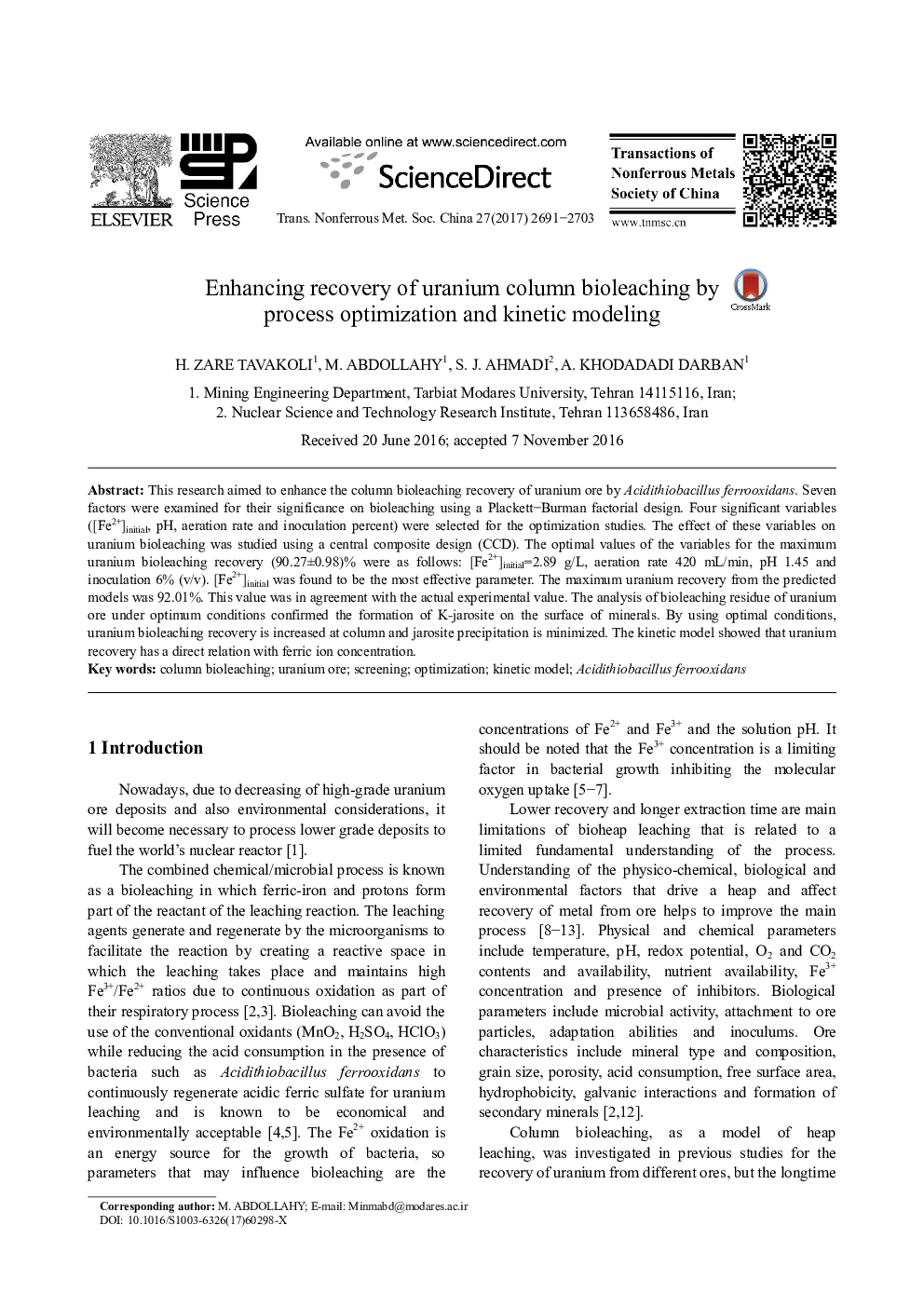| Article ID | Journal | Published Year | Pages | File Type |
|---|---|---|---|---|
| 8011760 | Transactions of Nonferrous Metals Society of China | 2017 | 13 Pages |
Abstract
This research aimed to enhance the column bioleaching recovery of uranium ore by Acidithiobacillus ferrooxidans. Seven factors were examined for their significance on bioleaching using a Plackett-Burman factorial design. Four significant variables ([Fe2+]initial, pH, aeration rate and inoculation percent) were selected for the optimization studies. The effect of these variables on uranium bioleaching was studied using a central composite design (CCD). The optimal values of the variables for the maximum uranium bioleaching recovery (90.27±0.98)% were as follows: [Fe2+]initial=2.89 g/L, aeration rate 420 mL/min, pH 1.45 and inoculation 6% (v/v). [Fe2+]initial was found to be the most effective parameter. The maximum uranium recovery from the predicted models was 92.01%. This value was in agreement with the actual experimental value. The analysis of bioleaching residue of uranium ore under optimum conditions confirmed the formation of K-jarosite on the surface of minerals. By using optimal conditions, uranium bioleaching recovery is increased at column and jarosite precipitation is minimized. The kinetic model showed that uranium recovery has a direct relation with ferric ion concentration.
Keywords
Related Topics
Physical Sciences and Engineering
Materials Science
Metals and Alloys
Authors
H. Zare TAVAKOLI, M. ABDOLLAHY, S.J. AHMADI, A. Khodadadi DARBAN,
